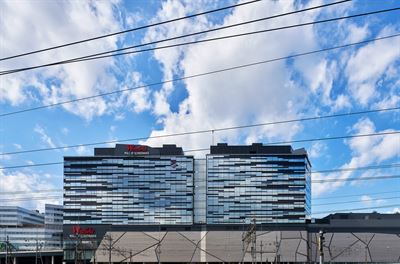Along with Ragn-Sells, Catena and Servistik, Fabege has formed the company Urban Services, which will work on streamlining transport in Arenastaden by offering service and logistics services to all shops and offices in the area. The aim is to create safer, more pleasant street environments by reducing transport by 70 percent by 2021.

Cleaner, more pleasant street environments with more efficient transport

One hub, less transport
Central to the initiative is the creation of a co-loading centre, known as a hub, where all hauliers drop off and pick up parcels. Parcels destined for shops and offices in the area are then delivered by green vehicle in a coordinated and structured way.
“The idea is that as many parcels as possible should come to the hub. A delivery van with several deliveries then avoids driving round the area and stopping at different addresses, which means we get less vehicles here” says Jacob Enwall, CEO of Urban Services.
Both outgoing and incoming transport should take place via the hub.
“If a delivery van arrives with ten parcels, it can also take ten parcels with it. We then get an efficient chain going both ways. The fact that Fabege owns almost all the properties in the area is a good basis for linking as many customers to the service as possible.”
More sustainable transport with electric vehicles
The vehicles used for transport in the area should as far as possible be electric.
“A great deal of transport takes place in Arenastaden. We want to be active when it comes to sustainability and taking a long-term approach, thus creating a street environment focusing on pedestrians, cyclists and electric vehicles. By using the hub as a co-loading centre for all transport in and out of Arenastaden, we reduce emissions while ensuring a good urban environment for those living, working and staying here,” he says.
Jacob Enwall is convinced that the initiative will have a major positive effect on the area.
“Creating a much more convenient logistics solution with fewer transport vehicles entails major benefits for both people and the environment. In the next stage, we’ll also be looking at what we can develop in terms of related and supplementary services. This is just the beginning.”

